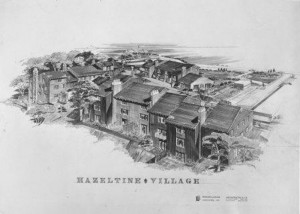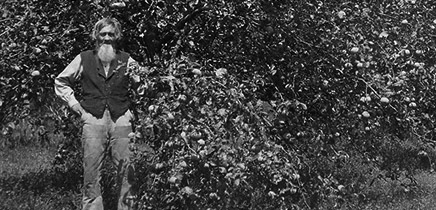The 1960s and 1970s were a time of rapid urban and suburban growth. City planners in these decades were frustrated with the growing problems of pollution, traffic, and creating new neighborhoods as cities spread. One solution to this idea was the “new town” movement. Designed as planned communities, these “towns” tried to organize the design and growth of the town in advance to better deal with urban sprawl. The community of Jonathan, located within the existing city of Chaska, was built with these concepts.
The idea of a “new town,” designed to meet the needs of the people living there, has been around for centuries in military and trade towns. The idea did not really catch hold until an Englishman named Sir Ebenezer Howard suggested “garden cities” within the area of London in the late 1800s. “New towns” were planned in Finland, England, Scotland and the United States.
One of the first to be built in the United States was Jonathan. Jonathan was the dream of former United States Senator Henry T. McKnight, who championed bills and acts protecting natural resources. On April 29, 1966, McKnight joined with others individuals to form the Ace Development Corporation, which became the Jonathan Development Corporation in 1967. Named after Jonathan Carver, the 18th century explorer, this self-contained town was built on eight thousand acres of woods, lakes and farmlands within Chaska city limits. Hazeltine Golf Course and the University of Minnesota Landscape Arboretum border it.
Planned as a town within a town, Jonathan in Chaska was meant to be built over a period of twenty years. Plans included the growth of population, industry, housing and recreation. Thinking for the long-term allowed the city to save time in future construction, and protect the surrounding natural environment while allowing residents to be closer to it. Initial development plans left one0fifth of the land open for future development.
Though within Chaska city limits, Jonathan was more than just a neighborhood. Designed to grow into a series of five villages, each with schools, churches, recreation areas and more, Jonathan was unique. This “town” has a city center with offices, stores and restaurants. Housing was offered as apartments, townhomes, or houses. Jonathan fell under the jurisdiction of both the city of Chaska and the Jonathan Development Corporation.
By October 1967, most of the land had been acquired. Community plans were made public. Construction began that same year. In October 1970, Jonathan became the first large-scale development to gain federal aid under Title IV of the New Communities Act, part of the Housing and Urban Development Act of 1968. This act provided a loan guarantee for up to $21 million, allowing developers and builders to increase the speed of construction.
Jonathan in the twenty-first century is not quite the “town” it was expected to be. A recession and loss of interest in planned communities in the early 1970s affected growth. With the death of Henry McKnight in 1974, the driving force behind planning and development was lost. Rezoning removed industrial and commercial shopping areas, leaving behind only homes. Jonathan remains within Chaska’s jurisdiction, but is governed by the Jonathan Association as well. Thought no longer a “town” within a town, Jonathan remains unique, and true to McKnight’s dream of remaining closer to the environment, with more parks, wooded areas, ponds and walking paths than most neighborhoods would have.
Turning Point: When construction began in 1967, Jonathan became the first “new town”, or planned community, to be built in Minnesota and the United States.
Chronology:
- Late 1800’s: New Town movement begins with the idea of “garden cities” by Sir Ebenezer Howard in London.
- April 29, 1966: Former U.S. Senator Henry T. McKnight joins with other individuals to form the Ace Development Corporation, which became the Jonathan Development Corporation in 1967.
- October 1967: Most of the land for Jonathan had been acquired and construction on this “new town” was well underway.
- October 1970: Jonathan becomes the first large-scale development to gain federal aid under Title IV of the New Communities Act, part of the Housing and Urban Development Act of 1968.
- Early 1970s: An economic recession and loss of interest in planned communities leads to a dwindling interest in Jonathan.
- 1974: Henry T. McKnight, the driving force behind the “new town” of Jonathan, dies and interest continues to wan.

AV-81-6484. Photograph Collection, Carver County Historical Society, Waconia. Photographic print “Jonathan Village” Description: An artist’s rendering of Jonathan Village, late1960s or early 1970s. Rights held by the CCHS.
Bibliography:
Caldwell, Dick. “’New Town’ of 50,000 Planned.” Minneapolis Star, August 1, 1967.
Carver County Historical Society Research Library subject files: Jonathan. Untitled, 1991. A brochure.
Halberg, Marsh. “The New Town Movement.” Chaska Herald, October 2008. Reprint. http://www.jonathaninchaska.com/index.cfm/linkservid/EE32461C-5056-A306-AF8BBB6E468822C7/showMeta/0/
“Henry McKnight Wanted Something Different and He Got It: a City Called Jonathan.” N.W. Bell Magazine, 53 no. 1 (1972): 10-15.
The Jonathan Association. The Jonathan Story. 1972. http://www.jonathaninchaska.com/index.cfm/linkservid/B2F24C57-5056-A306-AF9FF40302355C89/showMeta/0/
“New-Town Development Has Chaska in Limelight.” Weekly Valley Herald, August 1967. http://www.jonathaninchaska.com/index.cfm/linkservid/B112325F-5056-A306-AF16BD521BC937B8/showMeta/0/
Peterson, George. “McKnight Mixes Town Planning and Farming.” Minneapolis Tribune, January 24, 1971.
Podevels, Eric. “The Jonathan Story.” Senior Division paper, University of Minnesota, 1994.
Related Resources:
[Primary]
Duff, David. “Jonathan Puts History in Present and Future.” Eden Prairie Sun, August 21, 1973.
Hawkins, Beth. “Arrested Development (about Jonathan, the “New Town” planned community he developed).” City Pages, July 13, 2005.
“Henry T. McKnight, Jonathan Developer, Rites Wednesday.” Minneapolis Star, January 1, 1973.
“Jonathan Announces Construction of First Village Center.” Weekly Valley Herald, May 9, 1968.
Jonathan-Chaska Community Information System Project. People in Communication with Imagination. Chaska, MN: The Project, 1972..
Jonathan Development Corporation. Carver County Historical Society Research Library subject files: Jonathan. Welcome to Jonathan. 1991.
“Jonathan Development Sets Growth Record.” Waconia Patriot, March 1, 1973.
Mugford, John. “Some Residents Express Discontent with Jonathan’s Board and Rules.” Chaska Herald, November 9, 1995.
Oser, Alan S. ”U.S. Re-Evaluating ‘New Towns’ Program.” New York Times, 1976. http://www.jonathaninchaska.com/index.cfm/linkservid/B1B15850-5056-A306-AFFD72F6C35A8F27/showMeta/0/
U.S. Department of Housing and Urban Development. New Communities Act of 1968. 1968.
Woodley, Mary, ed. Jonathan’s Journal, 1 no. 11 (November 1971).
[Secondary]
Biles, Roger. “New Towns for the Great Society: A Case Study in Politics and Planning.” Planning Perspectives, 13 (1998): 113-132. http://www.jonathaninchaska.com/index.cfm/linkservid/B223AE5C-5056-A306-AFE8FA1CC39D6760/showMeta/0/
Bloom, Nicholas. “The Federal Icarus: The Public Rejection of 1970s National Suburban Planning.” Journal of Urban History, 28 no. 1 (Nov. 2001):55-71. http://www.jonathaninchaska.com/index.cfm/linkservid/B2031814-5056-A306-AF2029D02DD290C5/showMeta/0/
Tremblay, Ruth and Lois Schulstad. Images of America: Carver County. Arcadia Publishing: Charleston, South Carolina, 2011.
[Web]
Jonathan in Chaska website. History. http://www.jonathaninchaska.com/index.cfm/about-us/history/
Minnesota Legislative Reference Library website. Henry Turney McKnight, Sr. http://www.leg.state.mn.us/legdb/fulldetail.aspx?ID=13814
Images/Audio/Video
AV-81-6484. Photograph Collection, Carver County Historical Society, Waconia. Photographic print “Jonathan Village” Description: An artist’s rendering of Jonathan Village, late1960s or early 1970s. Rights held by the CCHS.
“This article used with the permission of MNopedia, operated by the Minnesota Historical Society, under a Creative Commons License. No changes have been made to the article’s content.”


